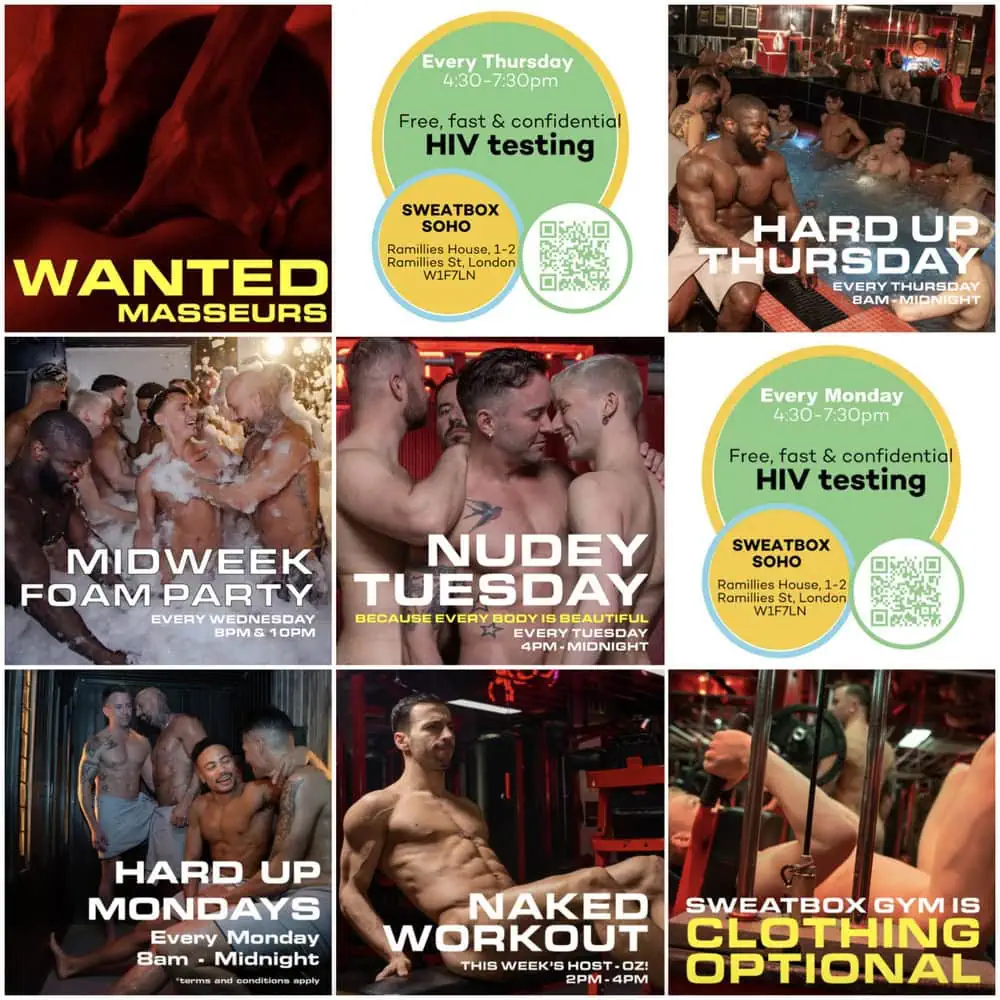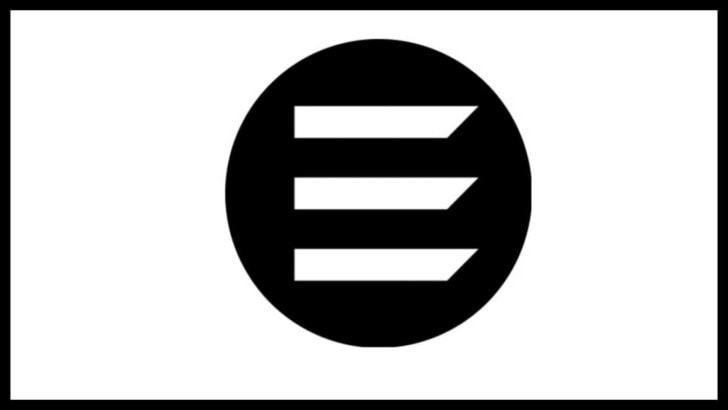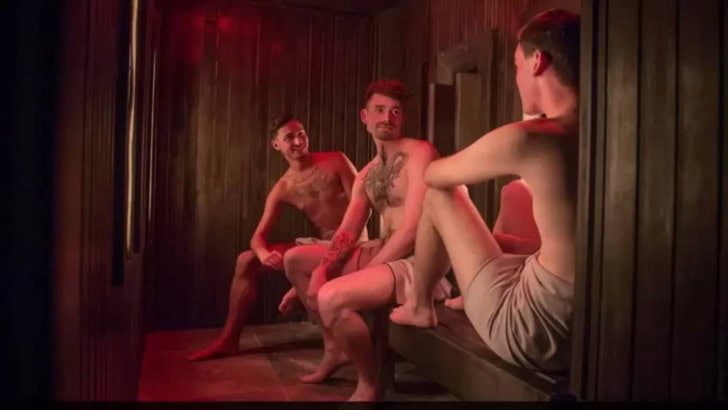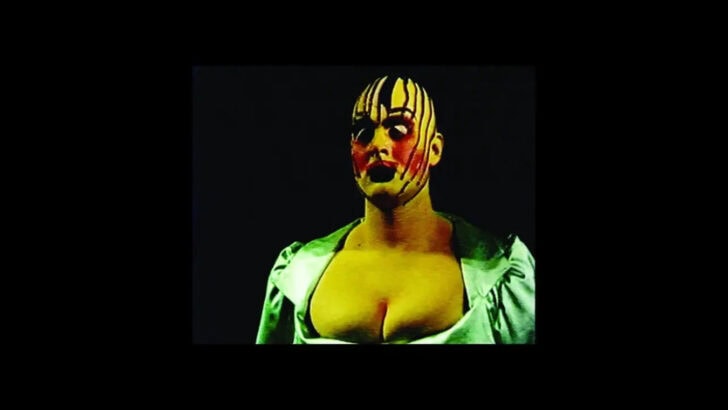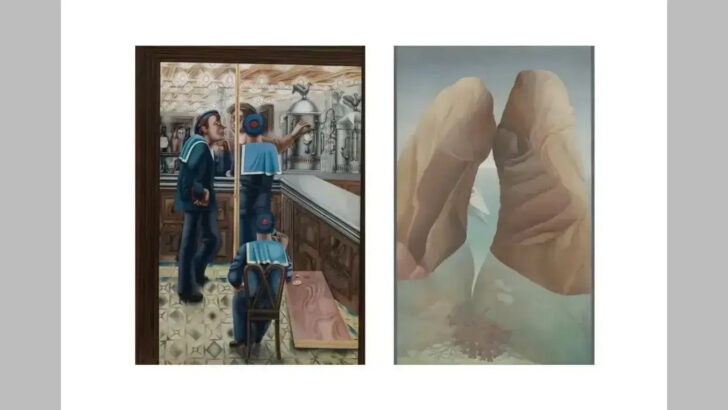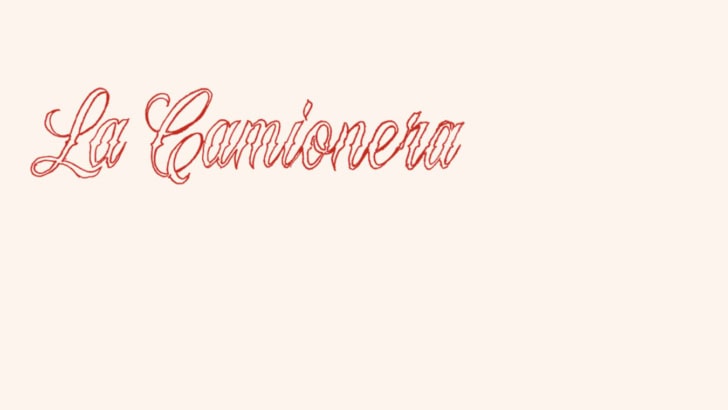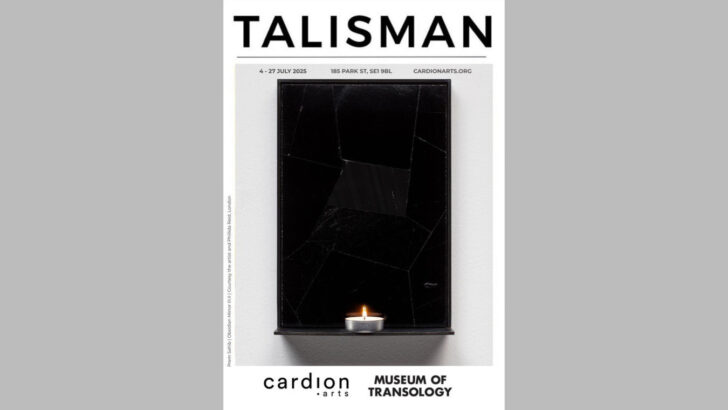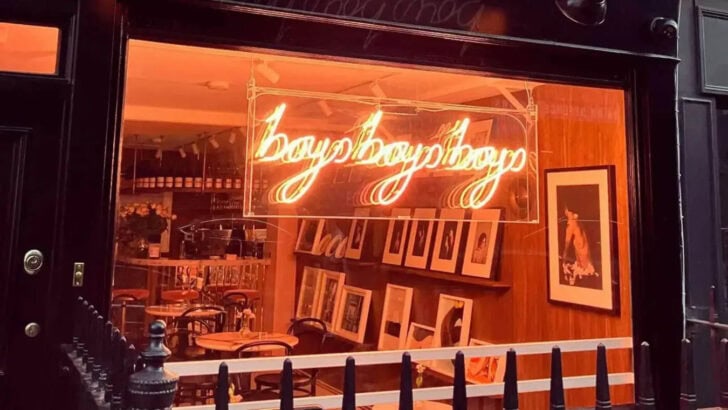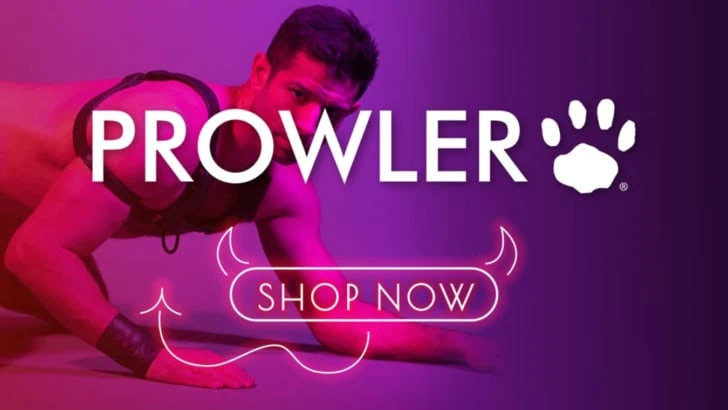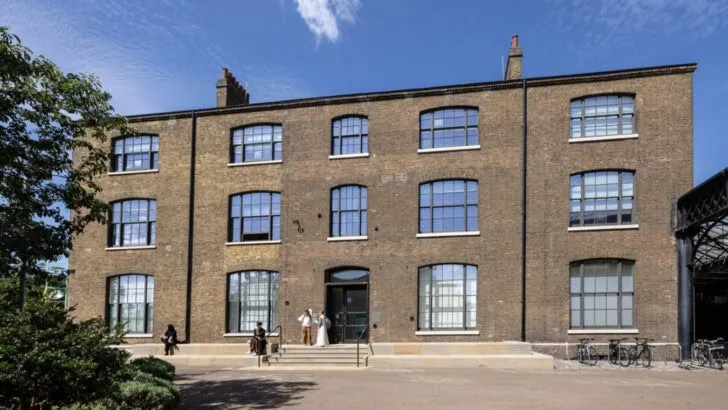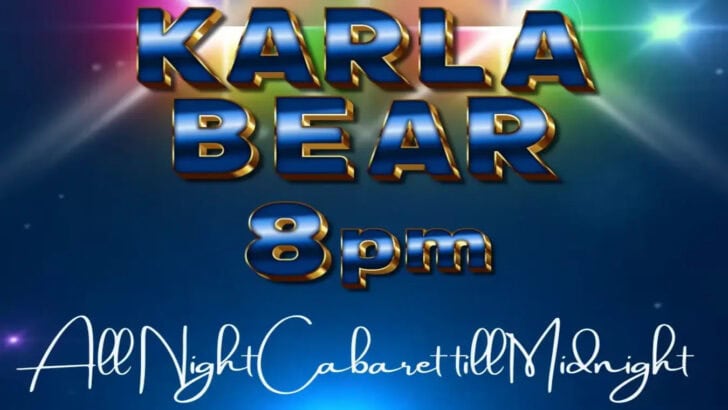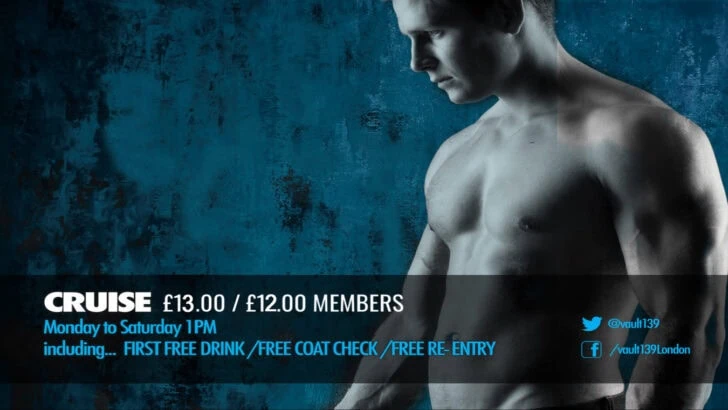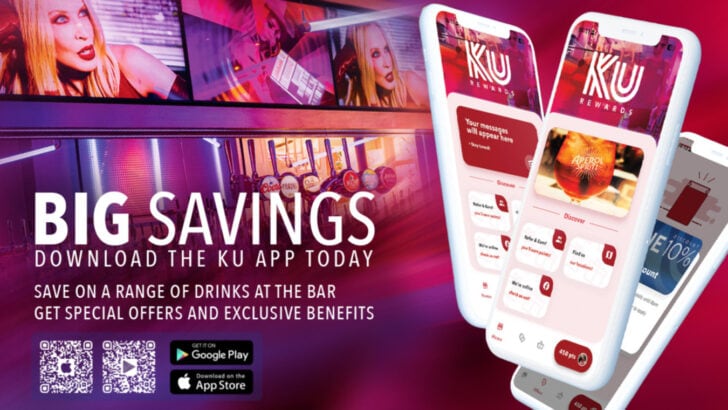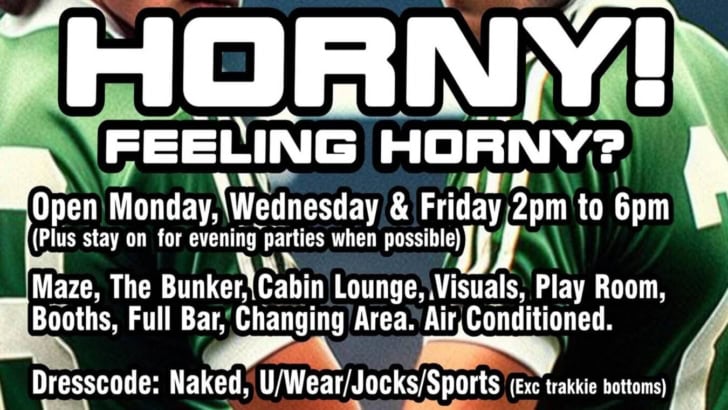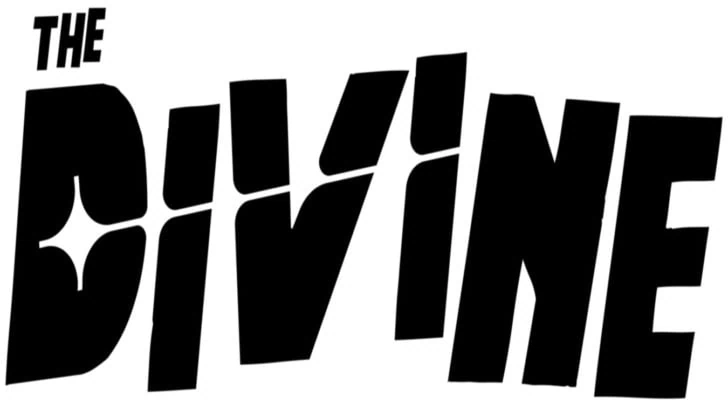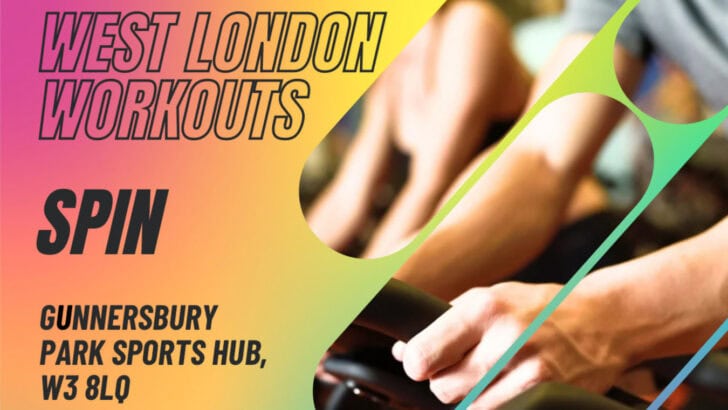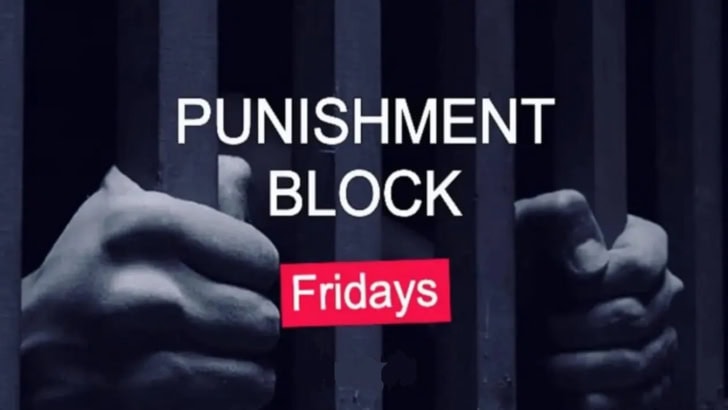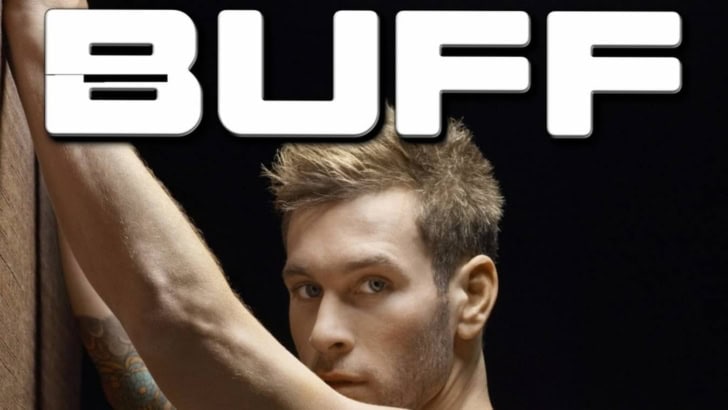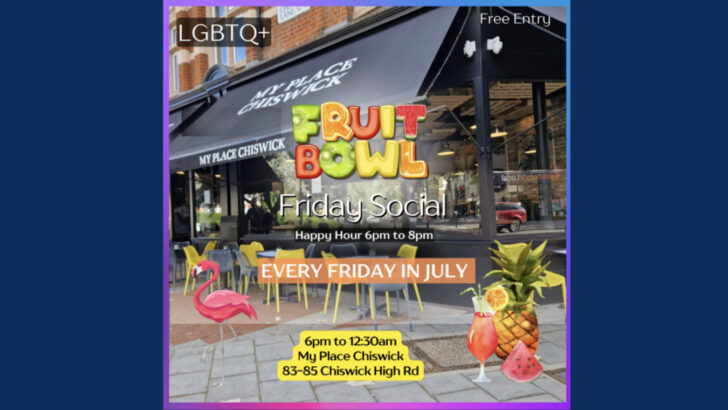Ego Rodriguez is one of the East End’s foremost LGBT artists and illustrators. We caught up with him to talk life, art, inspiration and his new ‘Macho’ exhibition at the Dalston Superstore.
By Patrick Cash
Ego Rodriguez
Tell us a bit about yourself.
I’ve been living in London for eighteen years, I was originally from Spain. I’ve been doing illustrations since I was a kid, never had like an invitation for it, I was doing drawing all the time, my parents are quite art-related people so me and my brother – my brother does comics, he works for Marvel comics and he does Spiderman at the moment. He’s really good at that, but I’ve got more into the illustration side, he likes the action, I mean I can do it but it’s not my thing, I prefer working hard on a themed idea. As I said, with illustration I’ve been always doing and having little jobs here and there in the last few years, but lately in the past four, five years it was when I started to concentrate and take it more as a job. And I’ve been working more as a freelancer.
Lee
Was it hard to make it into a job?
Yes, it was horrible, yes. And I’ve got side jobs in offices and stuff, it’s not something you can make into a living straight away but you just have to build it up. And work as many places as you can and try to do as many things. The thing is as well for me I don’t like to use the commercial. I don’t like to offer myself as ‘I do anything illustration’, I don’t like to be generic.
You want to retain your integrity.
Exactly. So it’s kind of the sense, I’m lucky because so far people who approach me for work are people who have seen my work and want something similar. But it could be sometimes someone who just wants me to draw a woman on a motorbike and if it’s not my kind of thing and it’s not an interest then I say no. So far it’s nice because the work I’ve got are themes I’m interested in, or illustrations I wouldn’t mind to try for the occasion.
Frank
That’s a very admirable ethos. And you’ve kind of answered this already, but how did you get into arts and illustration in the first place?
My parents, both of them, did fine arts. I grew up with painting, photography, filming at home, we used to do like movies with a shoebox and cameras at home, so we were really in like an arty environment. We went to the cinema a lot, had a lot of books available and lots of tools at home. So I grew up with an interest in the arts in general, and to be crafting and creative. And I like drawing and lots of stuff, like photography, but mainly I concentrate on the drawing part.
A spin-off topic, but do you think you would have been artistic if you hadn’t had artistic parents?
You can. You can if you have the interest. I think if you have an interest, like illustration or drawing, people say ‘you’ve got such a talent’, I don’t think it’s a talent, I think it’s a skill like you practise, you get it. I mean I’ve been drawing since I remembered, I’ve done comics from when I was six-years-old so if I’m drawing every day, if I keep drawing hands and faces and people and everything continuously, you improve it. You don’t need to have a talent, you just have to have an interest and work hard, like anything else.
Ken
What was the hardest thing for you to draw as a child?
As a child, my favourite things to draw were Egyptian gods, people with animal heads, so I used to draw lots of monsters as well. And I remember like ballroom dancers, like Frankenstein monsters with the brides, I was really obsessed with dark characters and so I was really obsessed with animals and mythological monsters and stuff. I used to draw people since I was a kid as well, I had a fantasy of creating characters and they were always kind of freaky with different arms, and I think freehand. What needs more structure, like line drawing where you’re doing flats or houses or stuff, I’m not very good at that. I’m very quick at sketching, I like to do something in like two seconds, like talking to you blah, blah, blah and I can do a drawing in a long time.
Do you find a release or meditative when you’re drawing?
Yeah, you need to get stuff out of your head. When I was a kid it was a way for me to express ideas and to create things I wanted to like places. Like fantasies I have with other worlds, with different people living there and different gods etc. And I grew up having that escape. Even now with portraits I like to draw people, when you think of someone, it’s always an interest of that person, it’s kind of a way to meet people. You pick things you like and you recreate them.
Hank
And what brought you the UK originally?
Boredom? I don’t know. It was eighteen years ago, I was nineteen. In 1996 I came here. I left home when I was eighteen, I had a kind of settled life at that time, I was doing jewellery, I was studying, living in my own flat, my dad was helping me out, I was doing fencing, drama, I met a guy who was my first boyfriend. Things were really good but at the same time I had this sense of ‘that’s it? There’s nothing else in life?’ and at eighteen I had settled. I always wanted to learn new languages, travel, go to the places I like, draw, recreate, so I left.
What it about the UK that attracted you?
It was a random situation, I went to Madrid, I tried for a few months, I hated it. Then I bumped into this girl who was a friend of mine, Kitty, and she said ‘I’m going to London for the summer, would you like to come?’ and I said ‘yeah, why not?’ It was really random. And I did, I had like a hundred quid on me, didn’t speak any of the language, didn’t know anybody here. She knew somebody in a squat in Clapham Common who were kicking out two weeks after. I painted the whole squat up, that’s what I did, drawing the walls, it was in Clapham in this massive house, we were doing parties over there trying to raise money so we could make it a social centre blah, blah, blah, so we were doing all these murals on the walls.
AL
Sounds amazing. Do you have any pictures?
No, I don’t, because I think my friend used to have a camera but we’re talking like 1996. So I know the pictures were actually like the walls, I totally painted our room from one side to the other with pastel, but it was a like a landscape transforming into a temple, so all of these little details, painted detail by detail in real size. So it was supposed to be like this dark landscape transforming into the ruins of a castle, like a temple like that and have a camera. It was kind of crazy stuff, but that’s what I do, I draw. I draw with everything continuously.
Brilliant. And how did you find the gay community of London when you moved over?
When I was in Spain I didn’t grow up so much in the gay scene per se but it was kind of a big movement grunge in the North-West of Spain where I come from, there was Roxanne and a lot of alternative bands. That was the scene I used to hang around and people didn’t give a shit if you were making out with guys or girls, it was open, and the bars and places where you used to hang around it was that kind of attitude. Even for the straight guys, it was cool to snog a guy. So I never gave a shit what people said about me or not, I never had to come out to be honest, I did a lip synch of Madonna’s ‘Like a Prayer’ for the whole school when I was thirteen so it was kind of like ‘no shame’. It was nothing to hide, so yeah that situation, when I came to London, I started to hang out with a similar scene, like Popstarz at La Scala had started in 1995 and it was like really mixed and a bit of everything and a bit like a school disco but more like everyone and everything goes. Ghetto as well started a bit later, Soho was kind of mixed as well, right now you’ve got the South Vauxhall situation, with Barcode and everything, it’s more a bit clichéd. Back then it was a bit of everything, it was gay friendly but not necessarily gay, so that’s what I like about London. You can find a bit of everything, if you want something properly gay, a men only situation, you can go to a bar but if you want that mix, like this, the Dalston Superstore, you’ve got it. I live just five minutes down the road, in Stoke Newington.
Ben
You’ve kind of just answered my question, I was going to say, where can I find you out dancing on the weekends?
This is one of the places, East Bloc as well. I love East Bloc, I know Larry Tee from New York already, when I lived there, and we’re really good friends so when he moved over here to London and he was opening clubs, it was perfect. And I knew everybody organising that, every single person around there. I like to go between here, there, Vogue Fabrics as well. I know everybody here and it’s nice to have that feeling of community.
And does your work reflect LGBT themes?
Not all of them. I mean, I think with Macho, one of the things I find interesting about them is that I have lesbian friends who love it, they like the whole ‘macho’ guy they think it’s really cool and comedy, and interesting. And then gay guys love it because they find it sexy and then friends that are trans and they love it as well because of the sense of the whole sexuality about how they can be so masculine or not, and then straight friends who love it because it’s so over over-the-top masculine, and I think I like that how different people in different sets in different worlds can actually find a common interest in an image. I don’t even think of it as gay, it was supposed to be straight originally, ideas coming from the Playgirl magazine. It was supposed to be addressed to women.
So you’re subverting?
Exactly. It was supposed to be for women, but you see with these guys and the pictures and the posters and so on they’re so camp and most of them are gay because they were gay actors in porn etc, but they were just doing Playgirl because Playgirl was an undercover gay magazine. But to be honest, I think I liked that kind of darkness about it, even if it’s really flashy and poppy, it’s something dark and hidden about the whole… I don’t know how to explain it.
I think I get what you mean. So, what would you say is the, I know it’s probably different for different things but do you have a general view of you as an artist? When I was looking through your website it said you were ‘fascinated by the macabre, dark corners, lost memories’, so is that the ethos that influences all of your art and how does it influence your art?
Yeah, I think so. Since I was kid I did have an interest for dark concepts, though I realised this when I grew up, not when I was a kid. So when you are a child, a teenager, and people tell me you you’re weird, or your ideas are a bit bizarre, of course at that time it makes you the weird, strange kid on the corner but when you’ve grown up you have to actually use it to like express myself and people actually find it interesting I think it has to be there and I know whatever I’m going to do I have to bring it with me and I like colour but all of the most colourful things are going to have some dark side to them or some dark concepts or dark ideas. I don’t know how to explain but everything is, I like to think of it as part of going deeper, rather than just the surface. I have a fascination for picking brains in a way, to bring something a bit more intimate, because actually I want something that’s damaged or whatever, that’s a bit more strange that they’ll sympathise with rather than say ‘oh, that’s beautiful, that’s nice’. I’m interested in dark, but not dark as just related to death or the macabre, but dark as in the sense of what people like to hide away. I think that’s interesting and that says a lot about people in general, and I like people as you can see from my illustrations about modelling figures and humans.
Dan
And how does that influence Macho? What was the main idea or inspiration apart from Playgirl?
Well, I was born in 1976 so I grew up in the 70s and 80s, so for me those figures, those guys, they were the first sexual kind of image, not necessarily the Playgirl itself, but the image of the hairy guy that’s my first encounter with the masculine figure, so something that goes back to the dark of my memory, that’s one of my sexy stimulations in that sense. When I started doing some portraits and stuff, lately for the last couple of years, people have had an interest in my portraits, but I don’t like to do portraits, for me portraits is just an exercise, I do it to practise anatomy, and people love it, they want to gain commissions, so I’m starting to explore that. So because they’re interested in that, whilst I’m doing something similar to that playing with the whole portraiture and the colours and the lines but don’t actually use people I know, but interests me in the same sexual way. It’s kind of like ‘let’s play with these guys, these guys from the 70s’, I was talking to someone the other day saying it’s the ‘Hello, Kitty’ but with pubes. That’s the whole macho thing, some people found it sexual but some people found it pretty because the lines and everything are just nice and colourful. So there’s that pop sense about it, something that you can have everywhere, on a sticker or a handbag, you see around and it’s nice and fun. But then, it’s hairy, naked men, there’s something sexual and a bit pervy in a way, and I like that kind of playful thing in a way. You take it out of comfort, and giving natural colours and skin and stuff, that will be more sexual or pornographic, but because they are cut and cropped properly and it’s everything about what you want to do in your head, it’s up to you how you want to see that. Beautiful, but sexual.
A lot of the LGBT artists that I know in the East End like Victoria Sin and Sina Sparrow etc, they do stuff on T-shirts as well, do you have any plans for that?
It’s funny because I was thinking about that on my way here. With Macho, three of them I would like to see on the T-shirt, but thinking about the concept for the T-shirt, a couple of them would play with negative space. So the drawings themselves, the figure is in one colour and then the rest of the T-shirt a single colour.
Rather than have it as a rectangle on white?
Exactly. At the moment there are these people in Berlin who have asked me to sell and do stuff with my merchandise, and I know they do T-shirts, they do more of the square-like things, they’re called Junique, and they do sell paints and they contact me because they really like the stuff and they think it’s the market for the stuff, and so they do paintings like prints and the T-shirts. I’m really biased about it, because I love T-shirts and the design of T-shirts but I think they should be more than just prints. I will look into it through the website etc.
Let me know because I’ll snap up one.
[Laughs] With Macho the idea is you can replicate it everywhere, and on Friday we’re going to have these postcards to give away, stickers, and that’s the thing to spread them around. As well as interested in selling painting, it’s about spreading like that to an image you can see everywhere, like an invasion of hairy men.
And how did you get involved with showing your art here at the Dalston Superstore?
Because I started doing Nancy’s for them and you see the posters for Nancy’s, so I know Dan and Matt and the company, I know them from before as well. I did some poster artwork for different nights, one of them is Tall Gay Agenda at Vogue Fabrics –
Oh Justin’s [Justin Hunt] night?
Yeah, Justin asked me to do something for him. And I did both of them actually. Dan saw the first one and he really liked it and he saw some of the Macho stuff, and they were thinking they wanted to rebrand the whole Friday nights over here to make it more gay friendly and stuff like that, and we were talking about some retro disco idea. We talked about a new identity, and what about this kind of Studio 54 idea about the stuff, and bringing a pop novel cover, so they’re telling a story where something is happening and you can follow them. So if you see the different posters, one is different to the other and life is a different point of view, make it something interesting. For that reason, Matt asked ‘why don’t you have the Macho guys here and we can connect it with Nancy’s?’ and we were like ‘cool, why not?’ I had an exhibition with them before as a kind of smaller thing, these ones are going to be quite big, eight with the long lightbulbs and a single guy each. They’re going to be quite in your face!
Cool, I’m looking forward to it. And finally, could you just give me one of your muses and why they inspire you?
Muses… muses… Someone asked me that before. Who could it be? I’m fascinated by cheekbones, and strong features, like bushy eyebrows and stuff. Like David Gandy (the Dolce & Gabbana model). He looks very smart with crazy blue eyes and nice hair. I like that kind of face, but I don’t really have muses. I love to draw women more than men anyway, I like the femme fatale figure. It depends on the concept that I’m working on.
I saw on your website there was A Man to Pet, that’s how I came up with the question.
Yes, I love A Man to Pet. I like to draw people who have something to say, a personality, a strong personality or crazy features about them. And if you see one of my portraits, one of the commissions it’s that it’s all people with something weird. People say ‘oh, they’re beautiful’, but that’s not true, they’re just really strong features, they make such a strong personality. For example, with A Man to Pet I love that picture, it’s one of my favourite ones, the eyes, the expression, the lips and everything. It’s got such a strong character and personality, for something I like – I draw that.
- Ego Rodriguez’ ‘Macho’ exhibition will be displaying until August 2014 at the Dalston Superstore, 117 Kingsland Road, E8 2PB.
- www.egorodriguez.com
